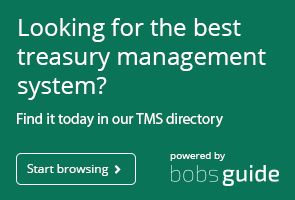The ability to handle multiple currencies is a major driver of globalisation and as electronic channels replace telephone-based trading, speed and execution quality is increasing – but so is regulatory oversight. Treasurers getting to grips with new FX trading platforms should focus on three main areas, says Jim Kwiatkowski of Thomson Reuters.
Best Execution Analysis
To boost performance, says Kwiatkowski, more and more corporate treasury departments are working execution analysis tools into their workflow. Using electronic trading platforms can help to record the time, price and market references for trade executions, whilst more advanced tools allow treasurers to analyse their FX investment decisions and strategies.
Particularly useful indicators to focus on include response times by trade size, currency and counterparty performance and spreads by time of day. According to Kwiatkowski, focussing on these can highlight opportunities for netting trades, increase process efficiency and cut costs.
“As more treasury departments have begun to integrate these types of reporting, analytics and tools with the benefits of an electronic FX trading platform, the improvements to execution performance have been significant, allowing corporate treasurers to capitalise on new opportunities in the fast-changing FX market place,” he said
Meeting the regulatory obligations
Phase One of the European Markets Infrastructure Regulation (EMIR) trade reporting obligation rolled out in February and Phase Two is due to go live on August 12th. But compliance with these, and with regulations stemming from the Dodd-Frank Act in the US can present an operational headache, says Kwiatkowski.
Both sets of regulations require that trades are reported to a data repository, but the data elements required for submission are often contained in more than one system. EMIR demands that a broad spectrum of information, from unique trade identifiers (UTIs) to dispute resolution procedures, are verified with trade counterparties – but too often, the mechanisms needed to do so don’t actually exist.
Kwiatkowski suggests that firms should battle these issues by looking into specialised FX management technology. Thomson Reuters, for example, offers trade and transaction data reporting services and swap execution facilities that help customers to trade FX non-deliverable forwards (NDFs) and FX options electronically through multibank request-for-stream (RFS) liquidity and an anonymous order book.
Actively Managing Risk
Whilst most corporate treasurers are used to relationship-based trading, many are now moving towards a very different “active trading” model, assuming more FX trading risk in order to bring down costs. This type of trading can include advanced order types and bank algorithms, which anonymously access electronic communication network (ECN) liquidity. If treasurers are comfortable with actively managing risk, these can be accessed directly. However, for those more at ease with the traditional “disclosed” basis, electronic platforms can route customised algorithmic orders and send resting order requests to their banks, leaving them to manage the risks instead.
In doing so, says Kwiatkowski, corporate treasurers can become more flexible, adapting their approach and accessing diverse liquidity pools according to the specific market conditions. Keeping a foot in both camps also means that treasurers can think carefully about how best to meet their objectives whilst dealing with a level of risk that they are comfortable with – and that they can justify to investors and regulators if necessary.
“Before moving to the anonymous ‘all-to-all’ nature of an ECN or order book, corporate treasurers should think about how much risk they want to assume in their FX trading and what they want to achieve from any additional execution alternatives - from faster execution of trades, to minimising market impact, to matching third party benchmarks or lowering transaction costs,” Kwiatkowski warns.
“This more active type of trading has not replaced the need for corporate treasurers to nurture bank relationships, nor does it eliminate their need for relationship-based trading. For corporations, good banking relationships will always be crucial to fulfilling certain trading objectives such as getting tighter, faster pricing in full amounts. However, this trend highlights how corporate treasurers can thoughtfully approach their FX trading more strategically by evaluating execution alternatives, how to get to the market faster, build a position or manage risk differently.”









